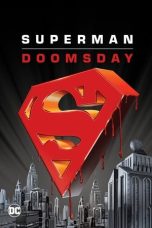- Source: Gallagh Man
Gallagh Man is the name given to a preserved Iron Age bog body found in County Galway, Ireland, in 1821. The remains date to c. 470–120 BC, and are of a six-foot (1.8 m) tall, healthy male with dark and reddish hair, who is estimated to have been about 25 years old at the time of death. The presence of a withy hoop – rope made from twisted willow twigs – found wrapped around his throat indicates that he was strangled during a ritual killing or executed as a criminal.
Gallagh Man was found buried in a ten-foot (3.0 m) deep grave in a peat bog, dressed in a long leather mantle, and pinned down by two long wooden stakes. His teeth and hair were almost fully preserved, and even though the body is severely dehydrated and thus shrivelled, it has suffered from little shrinkage and it is described overall as exceptionally well-preserved. The body was bought by the Royal Irish Academy in 1829 and is now possessed by the archaeology department of the National Museum of Ireland, Dublin, where it is one of four such bodies in their collection.
Discovery
Gallagh Man was discovered in 1821 by labourers working for the O'Kelly family while digging peat from a bog in Gallagh, a townland outside Castleblakeney, County Galway. The O'Kellys were a well-known and powerful family in the region, whose ancestors had built a castle at Gallagh during the medieval period. The body became a local curiosity which the O'Kelly family occasionally dug up to show to paying visitors before burying it again. The corpse remained in situ until excavated fully and bought by the Royal Irish Academy in 1829, and later transferred to the National Museum of Ireland.
However, as the O'Kelly family had dug and reburied the remains a number of times, parts of the find, especially the clothing became damaged. In addition, its exact find location was not recorded, but the likely area is adjacent to a contemporary townland, parish, and barony boundary, which was the medieval boundary of the Uí Maine kingdom ruled by the O'Kelly (Ó Ceallaigh) family.
Cause of death
The withy hoop found around his neck may originally have been part of a spancel used for restraining animals. It was probably used as a garrotte to strangle him, probably during a ritual involving human sacrifice, given that most of such bodies from this period are young males aged 25 to 40 years old, and like many of these victims, his hair had been closely cropped.
It is also possible that he was murdered without any ritual context, or was a criminal who was executed. However, the willow rope strongly suggests ritual sacrifice; they often appear for this purpose in early Irish mythological stories such as that of the Táin Bó Cúailnge.
Condition
The body was fastened to the end of the ten-foot (3.0 m) deep grave by two pointed wooden stakes which appear to have been placed so that either the body would not rise to the surface, or that the victim's soul would not escape. Osteological analysis suggests the man was in his early 20s when he died. His teeth, long dark-reddish hair and beard were well preserved. Unlike many bodies of this time, it does not appear to have shrunk in size and retains most of its original proportion. Elements of his burial indicate he did not die from natural causes. The body was pinned down by stakes, and a withy hoop was found wrapped around his throat. He was buried naked except for a long deerskin mantle or cape, which reached to his knees, while a long stick was placed in the grave alongside him.
The leather mantle was badly damaged during disinterment, but surviving fragments are displayed at the National Museum. It was sewn together with three knotted gut threads. A 19th-century study states that the "regularity and closeness of the stitches are most remarkable, as shown by the accompanying cut [of a proportion of one of the joinings ... see image to right] ... this closure was effected by ... a looped stitch similar to that used in working a button-hole, so that by having each stitch knotted the chances of ripping was lessened."
See also
List of bog bodies
References
= Notes
== Sources
=Kata Kunci Pencarian:
- Gallagh Man
- List of bog bodies
- Bog body
- National Museum of Ireland – Archaeology
- 1821 in archaeology
- Eric Lubbock, 4th Baron Avebury
- Uí Mháine
- Amhrán na bhFiann
- Rickard Deasy (campaigner)
- Chronology of Provisional Irish Republican Army actions (1970–1979)
The Last Rifleman (2023)
Superman/Batman: Apocalypse (2010)
Batman v Superman: Dawn of Justice (2016)
Wonder Woman: Bloodlines (2019)
Superman: Doomsday (2007)
The Death and Return of Superman (2019)
No More Posts Available.
No more pages to load.














